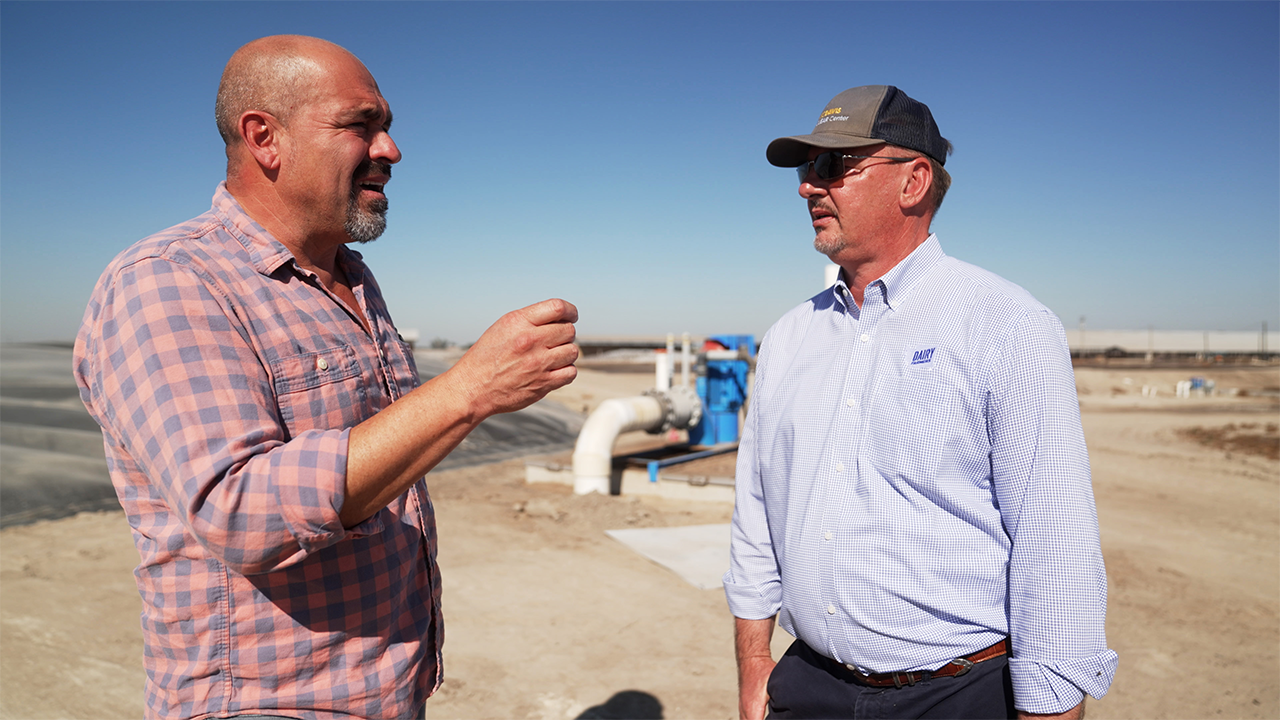
Reducing Dairy Methane Emissions: California Sets an Example for the World
By Frank Mitloehner
California’s climate targets for agriculture are some of the most ambitious in the world. Fortunately, by incentivizing the adoption of new technologies on farms, we can meet these goals.
California is requiring its world-leading dairy industry to reduce methane emissions by 40% by 2030, compared to 2013 levels. What’s notable is California isn’t relying on penalties to achieve these results through regulations. Instead, it’s leveraging a voluntary incentive approach — and it has proven to be more effective than we ever imagined.
The California dairy sector will likely meet the goal to reduce 40% of methane emissions. Much of the success is tied to California’s novel incentive-based approach, which includes programs such as the Low Carbon Fuel Standard and Dairy Digester Research and Development that supports dairy digesters and operation.
While we are reaping the rewards in the form of lower emissions, the world is closely observing California’s efforts to curb greenhouse gases. I’ve spoken all over the world, and a recurring topic has been how California has managed to lead the globe in both milk production and dairy emissions reductions. I’m proud to share our success stories and I see immense value in California continuing to incentivize reductions on farms because it is a proven way to reduce the climate impact of producing food.

California Dairy Sector Poised for Climate Neutrality by 2030, per UC Davis Researchers
Researchers at University of California, Davis, have a stunning prediction. In a peer-reviewed paper recently published by CABI Biological Sciences, Conor McCabe, Hamed El-Mashad and Frank Mitloehner argue that California’s dairy sector can reach climate neutrality in the coming years with aggressive methane mitigation, something few, if any, other sectors can achieve.
Despite our remarkable results, the California Air Resources Board (CARB) will meet in early November to discuss changes to the state’s very successful approach. CARB is considering a shift from the current, effective incentive-based model to a more stringent regulatory framework – I call this replacing the carrot with the stick approach. This shift could disrupt the collaborative approach that dairy farmers have embraced over the past decade and may jeopardize the financial viability of existing digesters by reducing the price of environmental credits, ultimately threatening to reverse the downward trend in methane emissions in the state.
This approach is misguided. We’ve seen variations of the regulatory model play out in countries such as the Netherlands, France, and Germany, and the results do not inspire confidence. In fact, farmers in these countries have taken to the streets in protest, leading regulatory bodies to reconsider their environmental initiatives. In contrast, here in California, our farmers are continuing to produce milk prolifically, at the same time significantly reducing greenhouse gas emissions.
To put it in perspective, the California dairy industry consists of 1.69 million lactating cows — down from 1.75 million in 2017 — that produce 41-plus billion pounds of milk each year. The industry represents California’s largest agricultural commodity, generating approximately $6.3 billion annually. The sector also should be applauded for reducing more than 4.8 million metric tons of CO2e (MMTCO2e) and for being more than two-thirds to its goal of 7.2 MMTCO2e, thanks in large part to dairy digesters and improved efficiencies. Because these are reductions of methane, a potent but short-lived greenhouse gas, they can quickly help reduce climate warming, and it will be important to replicate this success across the globe.
By covering a manure lagoon and building an anerobic digester, we can capture and prevent methane from escaping into the atmosphere. In addition, the trapped methane can be pumped out and used as a renewable fuel, making these systems environmentally and economically sustainable.


CARB and the California Department of Food and Agriculture have been integral to their adoption. Through the Dairy Digester Research and Development Program, funded by the Greenhouse Gas Reduction Fund, these agencies have provided financial assistance to dairy farmers to install these covered lagoons. These initiatives help to reduce methane emissions while generating electricity and renewable natural gas.
Additional funding opportunities are available through the Alternative Manure Management Program to install solid separators, compost-bedded pack barns, and weeping walls. These technologies further lower emissions. As of October 2024, 138 dairy digesters and 168 AMMP projects have been funded and either completed or are scheduled to be built on farms across California.
It's untrue that digesters are leading to growth of the state’s dairy operations. CARB has stated, “On average, when comparing similar-sized dairies with and without digesters, there is no difference between their growth rates.” In truth we are seeing smaller dairies leave the industry while larger dairies are increasing their herd sizes. This is a reality of the operational environment in California, and it stands to be worsened by heavy‑handed regulations that threaten to further reduce the number of dairies in the state where milk is produced with high environmental standards.
Fortunately, we have many tools that are chipping away at emissions, with more technological breakthroughs coming online. Thanks to research and development at research institutions such as UC Davis, along with the willingness of dairy farmers to adopt innovative practices, we are significantly reducing greenhouse gas emissions on farms.
The progress we have made is impressive — not just because we’re cutting emissions but because we are setting a benchmark for a best-in-class approach. Kudos to our policymakers for driving this success by providing financial incentives for producers to implement new technologies, such as dairy digesters. The Low Carbon Fuel Standard program has also been instrumental in making huge strides in reducing greenhouse gas emissions. Abandoning these effective strategies would be counterproductive. We need to continue reducing emissions as quickly as possible and changing course now would risk slowing or reversing the strong momentum we have built in cutting methane emissions across California.
And that’s a game we can’t afford to lose.
